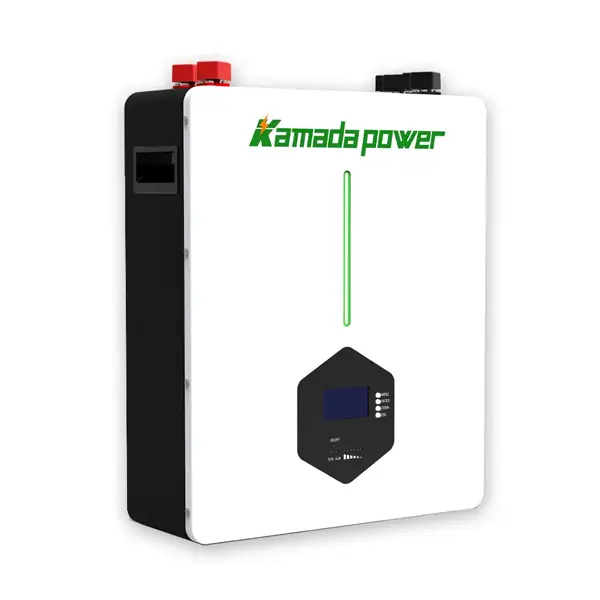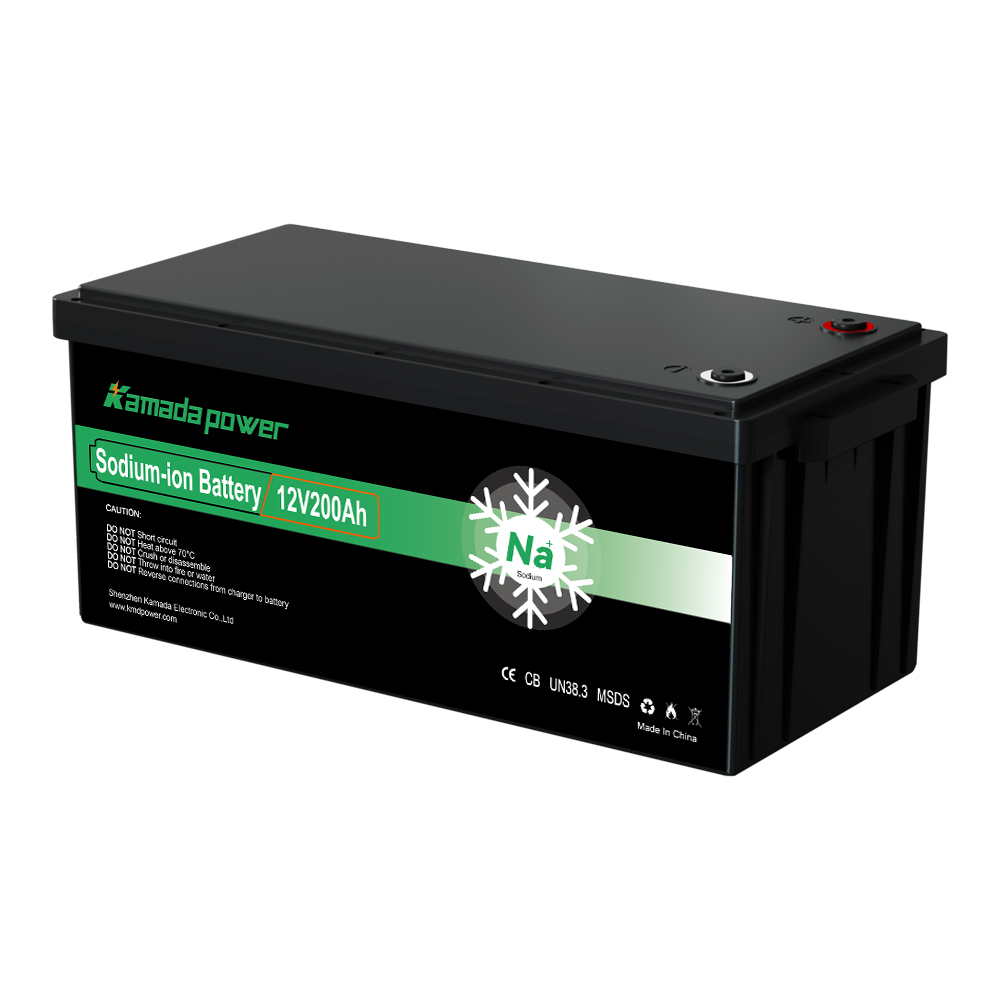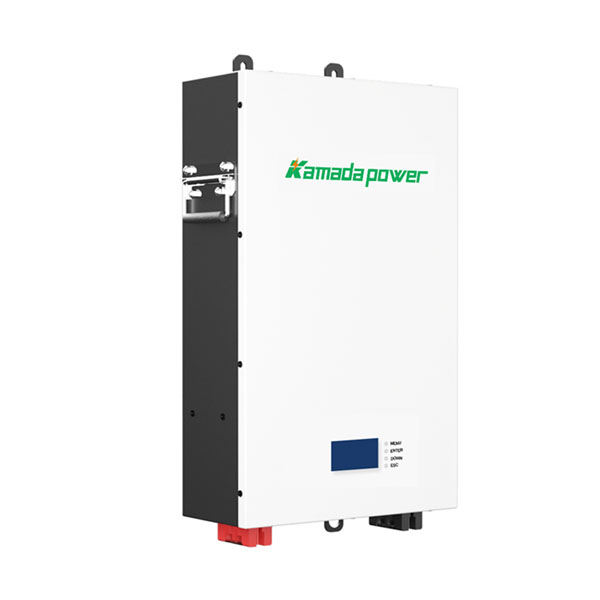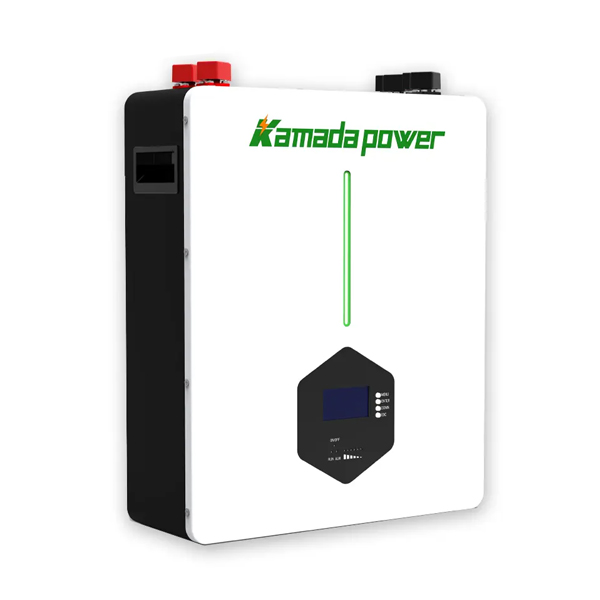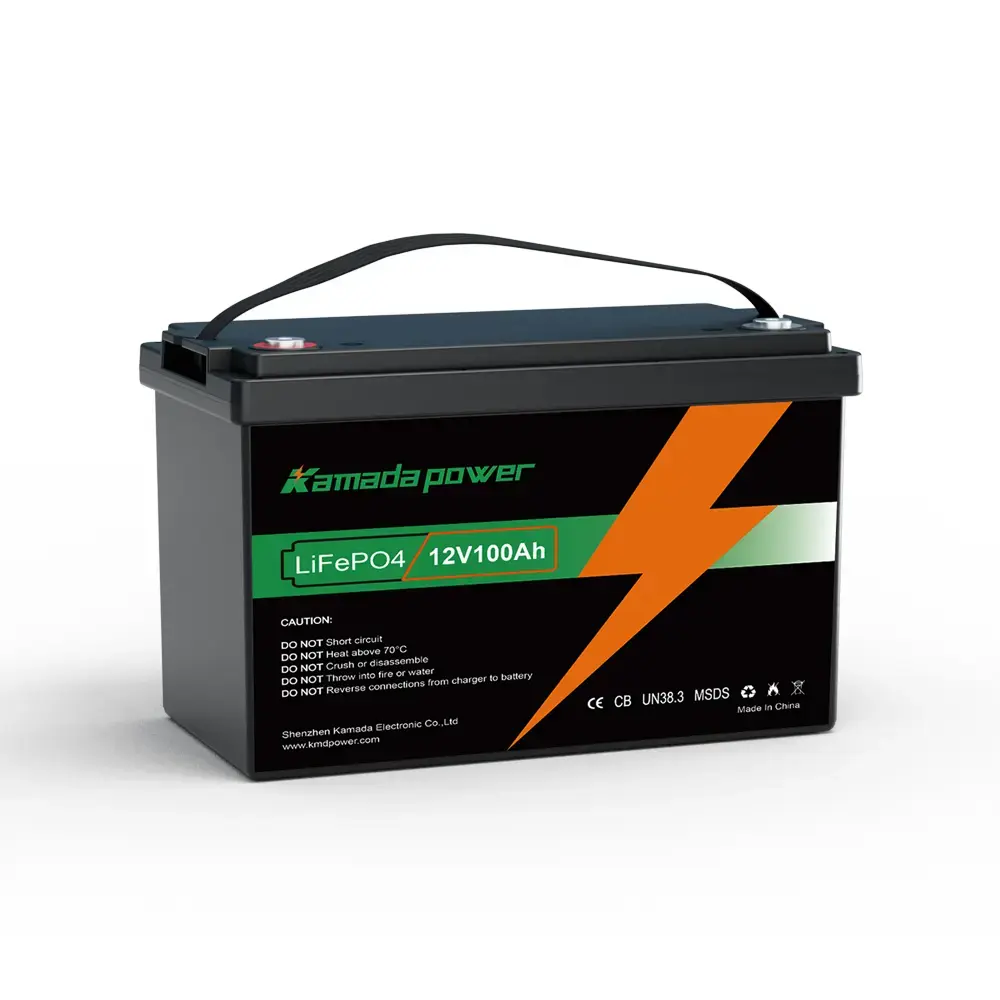Introduction
Kamada Power is China Sodium Ion Battery Manufacturers.With rapid advancements in renewable energy and electric transportation technologies, sodium ion battery have emerged as a promising energy storage solution, garnering widespread attention and investment. Due to their low cost, high safety, and environmental friendliness, sodium ion battery are increasingly viewed as a viable alternative to lithium ion battery. This article explores in detail the composition, working principles, advantages, and diverse applications of sodium ion battery.
1. Overview of Sodium ion battery
1.1 What are Sodium ion battery?
Definition and Basic Principles
Sodium ion battery are rechargeable batteries that use sodium ions as charge carriers. Their operating principle is similar to that of lithium ion battery, but they use sodium as the active material. Sodium ion battery store and release energy by the migration of sodium ions between the positive and negative electrodes during charge and discharge cycles.
Historical Background and Development
Research on Sodium ion battery dates back to the late 1970s when French scientist Armand proposed the concept of “rocking chair batteries” and began studying both lithium-ion and Sodium ion battery. Due to challenges in energy density and material stability, research on Sodium ion battery stalled until the discovery of hard carbon anode materials around the year 2000, which sparked renewed interest.
1.2 Working Principles of Sodium ion battery
Electrochemical Reaction Mechanism
In Sodium ion battery, electrochemical reactions primarily occur between the positive and negative electrodes. During charging, sodium ions migrate from the positive electrode, through the electrolyte, to the negative electrode where they are embedded. During discharging, sodium ions move from the negative electrode back to the positive electrode, releasing stored energy.
Key Components and Functions
The main components of Sodium ion battery include the positive electrode, negative electrode, electrolyte, and separator. Positive electrode materials commonly used include sodium titanate, sodium sulfur, and sodium carbon. Hard carbon is predominantly used for the negative electrode. The electrolyte facilitates sodium ion conduction, while the separator prevents short circuits.
2. Components and Materials of Sodium ion battery
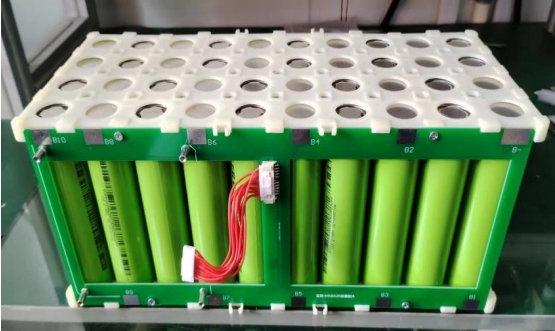
2.1 Positive Electrode Materials
Sodium Titanate (Na-Ti-O₂)
Sodium titanate offers good electrochemical stability and relatively high energy density, making it a promising positive electrode material.
Sodium Sulfur (Na-S)
Sodium sulfur batteries boast high theoretical energy density but require solutions for operational temperatures and material corrosion issues.
Sodium Carbon (Na-C)
Sodium carbon composites provide high electrical conductivity and good cycling performance, making them ideal positive electrode materials.
2.2 Negative Electrode Materials
Hard Carbon
Hard carbon offers high specific capacity and excellent cycling performance, making it the most commonly used negative electrode material in Sodium ion battery.
Other Potential Materials
Emerging materials include tin-based alloys and phosphide compounds, showing promising application prospects.
2.3 Electrolyte and Separator
Selection and Characteristics of Electrolyte
The electrolyte in Sodium ion battery typically comprises organic solvents or ionic liquids, requiring high electrical conductivity and chemical stability.
Role and Materials of Separator
Separators prevent direct contact between the positive and negative electrodes, thus preventing short circuits. Common materials include polyethylene (PE) and polypropylene (PP) among other high molecular weight polymers.
2.4 Current Collectors
Material Selection for Positive and Negative Electrode Current Collectors
Aluminum foil is typically used for positive electrode current collectors, while copper foil is used for negative electrode current collectors, providing good electrical conductivity and chemical stability.
3. Advantages of Sodium ion battery
3.1 Sodium-ion vs. Lithium ion battery
| Advantage | Sodium ion battery | Lithium ion battery | Applications |
|---|---|---|---|
| Cost | Low (abundant sodium resources) | High (scarce lithium resources, high material costs) | Grid storage, low-speed EVs, backup power |
| Safety | High (low risk of explosion and fire, low risk of thermal runaway) | Medium (risk of thermal runaway and fire exists) | Backup power, marine applications, grid storage |
| Environmental Friendliness | High (no rare metals, low environmental impact) | Low (use of rare metals such as cobalt, nickel, significant environmental impact) | Grid storage, low-speed EVs |
| Energy Density | Low to medium (100-160 Wh/kg) | High (150-250 Wh/kg or higher) | Electric vehicles, consumer electronics |
| Cycle Life | Medium (over 1000-2000 cycles) | High (over 2000-5000 cycles) | Most applications |
| Temperature Stability | High (wider operating temperature range) | Medium to high (depending on materials, some materials unstable at high temperatures) | Grid storage, marine applications |
| Charging Speed | Fast, can charge at 2C-4C rates | Slow, typical charge times range from minutes to hours, depending on battery capacity and charging infrastructure |
3.2 Cost Advantage
Cost-effectiveness Compared to Lithium ion battery
For average consumers, Sodium ion battery may potentially be cheaper than lithium ion battery in the future. For example, if you need to install an energy storage system at home for backup during power outages, using Sodium ion battery may be more economical due to lower production costs.
Abundance and Economic Viability of Raw Materials
Sodium is abundant in the Earth’s crust, comprising 2.6% of crustal elements, much higher than lithium (0.0065%). This means sodium prices and supply are more stable. For instance, the cost to produce a ton of sodium salts is significantly lower than the cost for the same amount of lithium salts, giving Sodium ion battery a significant economic advantage in large-scale applications.
3.3 Safety
Low Risk of Explosion and Fire
Sodium ion battery are less prone to explosion and fire under extreme conditions such as overcharging or short circuits, giving them a significant safety advantage. For example, vehicles using Sodium ion battery are less likely to experience battery explosions in the event of a collision, ensuring passenger safety.
Applications with High Safety Performance
The high safety of Sodium ion battery makes them suitable for applications requiring high safety assurance. For instance, if a home energy storage system uses Sodium ion battery, there is less concern about fire hazards due to overcharging or short circuits. Additionally, urban public transport systems such as buses and subways can benefit from the high safety of Sodium ion battery, avoiding safety accidents caused by battery failures.
3.4 Environmental Friendliness
Low Environmental Impact
The production process of Sodium ion battery does not require the use of rare metals or toxic substances, reducing the risk of environmental pollution. For example, manufacturing lithium ion battery requires cobalt, and cobalt mining often has negative impacts on the environment and local communities. In contrast, sodium-ion battery materials are more environmentally friendly and do not cause significant damage to ecosystems.
Potential for Sustainable Development
Due to the abundance and accessibility of sodium resources, Sodium ion battery have the potential for sustainable development. Imagine a future energy system where Sodium ion battery are widely used, reducing dependence on scarce resources and reducing environmental burdens. For example, the recycling process of Sodium ion battery is relatively simple and does not generate large amounts of hazardous waste.
3.5 Performance Characteristics
Advancements in Energy Density
Despite lower energy density (i.e., energy storage per unit weight) compared to lithium ion battery, sodium-ion battery technology has been closing this gap with improvements in materials and processes. For example, the latest sodium-ion battery technologies have achieved energy densities close to lithium ion battery, capable of meeting various application requirements.
Cycle Life and Stability
Sodium ion battery have a longer cycle life and good stability, meaning they can undergo repeated charge and discharge cycles without significantly decreasing performance. For example, Sodium ion battery can maintain over 80% capacity after 2000 charge and discharge cycles, making them suitable for applications requiring frequent charge and discharge cycles, such as electric vehicles and renewable energy storage.
3.6 Low Temperature Adaptability of Sodium ion battery
Sodium ion battery demonstrate stable performance in cold environments compared to lithium ion battery. Here’s a detailed analysis of their suitability and application scenarios in low-temperature conditions:
Low Temperature Adaptability of Sodium ion battery
- Electrolyte Low Temperature Performance:The electrolyte commonly used in Sodium ion battery exhibits good ion conductivity at low temperatures, facilitating smoother internal electrochemical reactions of Sodium ion battery in cold environments.
- Material Characteristics:The positive and negative electrode materials of Sodium ion battery demonstrate good stability in low-temperature conditions. Particularly, negative electrode materials like hard carbon maintain good electrochemical performance even at low temperatures.
- Performance Evaluation:Experimental data indicates that Sodium ion battery maintain a capacity retention rate and cycle life superior to most lithium ion battery at low temperatures (e.g., -20°C). Their discharge efficiency and energy density exhibit relatively small declines in cold environments.
Applications of Sodium ion battery in Low Temperature Environments
- Grid Energy Storage in Outdoor Environments:In cold northern regions or high latitudes, Sodium ion battery efficiently store and release electricity, suitable for grid energy storage systems in these areas.
- Low Temperature Transportation Tools:Electric transportation tools in polar regions and winter snow roads, such as Arctic and Antarctic exploration vehicles, benefit from reliable power support provided by Sodium ion battery.
- Remote Monitoring Devices:In extremely cold environments like polar and mountainous regions, remote monitoring devices require long-term stable power supply, making Sodium ion battery an ideal choice.
- Cold Chain Transportation and Storage:Food, medicine, and other commodities requiring constant low-temperature control during transportation and storage benefit from the stable and reliable performance of Sodium ion battery.
Conclusion
Sodium ion battery offer numerous advantages over lithium ion battery, including lower cost, enhanced safety, and environmental friendliness. Despite their slightly lower energy density compared to lithium-ion batteries, sodium ion battery technology is steadily narrowing this gap through ongoing advancements in materials and processes. Moreover, they demonstrate stable performance in cold environments, rendering them suitable for a variety of applications. Looking ahead, as technology continues to evolve and market adoption grows, sodium ion battery are poised to play a pivotal role in energy storage and electric transportation, fostering sustainable development and environmental conservation.
Click Contact Kamada Power for your custom sodium ion battery solution.

